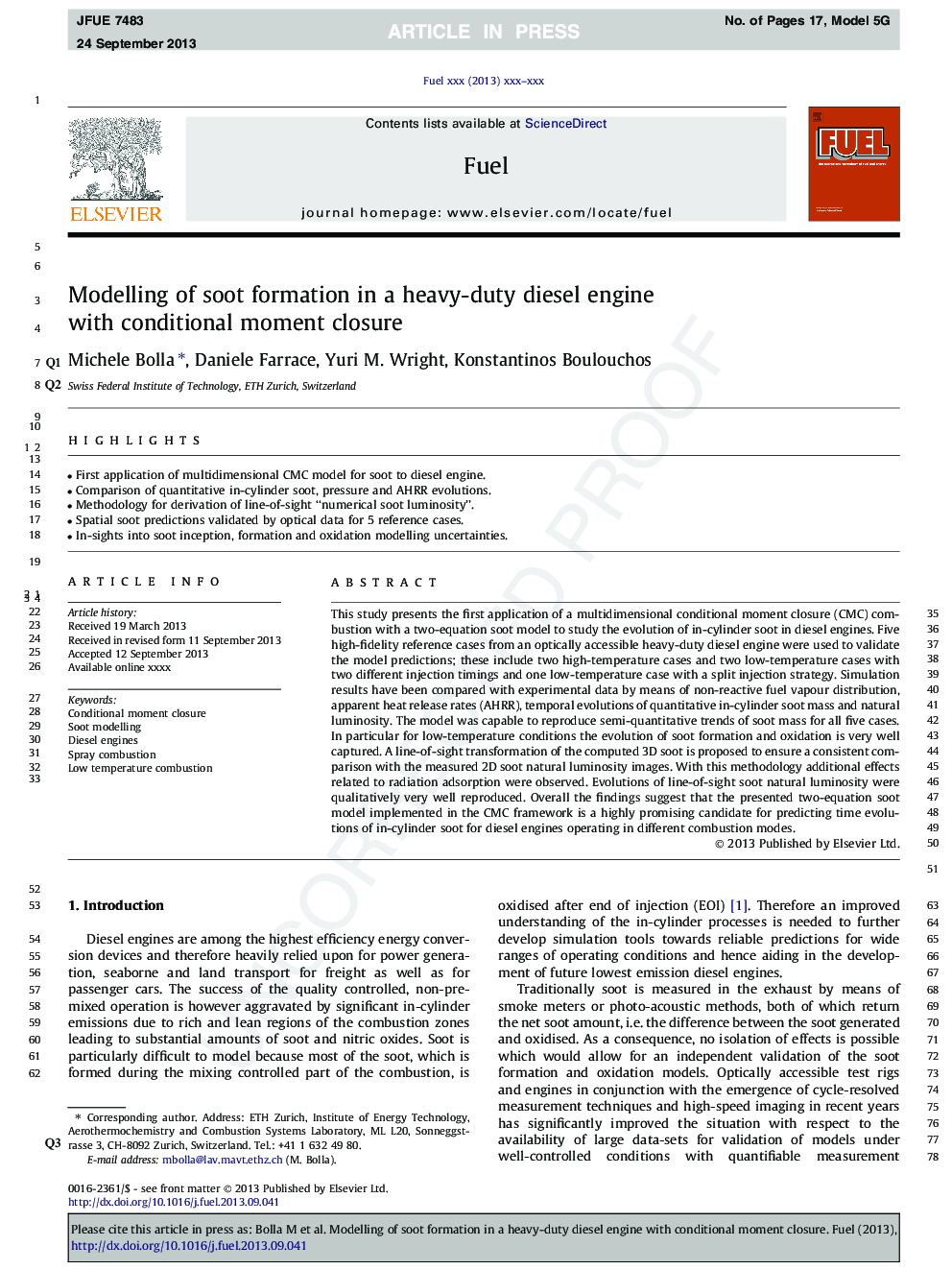| Article ID | Journal | Published Year | Pages | File Type |
|---|---|---|---|---|
| 10271970 | Fuel | 2014 | 17 Pages |
Abstract
This study presents the first application of a multidimensional conditional moment closure (CMC) combustion with a two-equation soot model to study the evolution of in-cylinder soot in diesel engines. Five high-fidelity reference cases from an optically accessible heavy-duty diesel engine were used to validate the model predictions; these include two high-temperature cases and two low-temperature cases with two different injection timings and one low-temperature case with a split injection strategy. Simulation results have been compared with experimental data by means of non-reactive fuel vapour distribution, apparent heat release rates (AHRR), temporal evolutions of quantitative in-cylinder soot mass and natural luminosity. The model was capable to reproduce semi-quantitative trends of soot mass for all five cases. In particular for low-temperature conditions the evolution of soot formation and oxidation is very well captured. A line-of-sight transformation of the computed 3DÂ soot is proposed to ensure a consistent comparison with the measured 2DÂ soot natural luminosity images. With this methodology additional effects related to radiation adsorption were observed. Evolutions of line-of-sight soot natural luminosity were qualitatively very well reproduced. Overall the findings suggest that the presented two-equation soot model implemented in the CMC framework is a highly promising candidate for predicting time evolutions of in-cylinder soot for diesel engines operating in different combustion modes.
Keywords
Related Topics
Physical Sciences and Engineering
Chemical Engineering
Chemical Engineering (General)
Authors
Michele Bolla, Daniele Farrace, Yuri M. Wright, Konstantinos Boulouchos,
